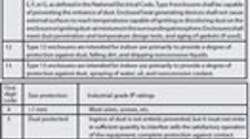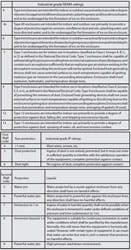NEMA and IP ratings define protection against ingress of contaminants. NEMA ratings are standards set by the National Electrical Manufacturers Association. IP ratings are International standards. These ratings, typically two digits, are used to determine the environmental protection of the transducer. Two examples are IP40 and IP60. The first digit defines the protection against solid objects into the transducer housing. The second digit defines the protection against liquids into the transducer housing. The higher the number associated with the rating, the better the protection.
The NEMA or IP rating is an important specification of transducer. For example, if a transducer is NEMA 1 or IP40 rated for an indoor environment, chances are the sensor will fail due to water intrusion and other containments getting inside the enclosure if you use it outside. Typically, cost goes up the greater the NEMA or IP rating.
The NEMA or IP rating of a transducer often can be overlooked when determining what sensor works best for an application. Accuracy, pressure range, and outputs are all crucial specifications, but if the transducer is not suitable for the environment in which it will be functioning, then all other specifications are greatly minimized.
Submitted by Transducers Direct, Cincinnati. For more information, e-mail [email protected] or visit www.transducersdirect.com.


